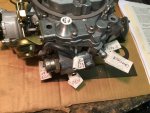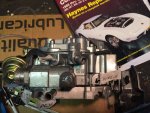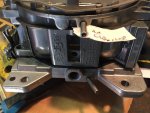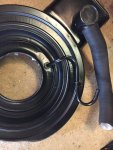trevbeadle
CCCUK Member
Just trying to confirm which components use which vacuum source as I am replacing a carb on a stock engine.The engine still has EGR, EFE, PCV and charcoal canister as well as hot and cold air filter housing and AIR ( I know no vacuum requirement for 'Smog'). As far as I can work out, the only thing that likes ported vacuum is EGR. My understanding is that ported vacuum is zero at idle. Whats the situation with vacuum advance on a standard fit distributor? I thought it only requires vacuum advance as the revs climb above 1500, i.e ported vacuum, yet all the diagrams I see it comes from manifold vacuum!!!
Here are the ports on the new Rochester carb I will be fitting with what I think are the correct ports labelled for each item. ( Canister also gets a small ported vacuum source teed of the EGR supply) The one I'm not sure about is the dissy one, it appears to be 'above' the throttle butterflies but maybe runs inside the carb to ported pressure or is manifold vacuum correct???



 and where does the S connector on the underside of the air cleaner connect to?
and where does the S connector on the underside of the air cleaner connect to?
Many thanks
Here are the ports on the new Rochester carb I will be fitting with what I think are the correct ports labelled for each item. ( Canister also gets a small ported vacuum source teed of the EGR supply) The one I'm not sure about is the dissy one, it appears to be 'above' the throttle butterflies but maybe runs inside the carb to ported pressure or is manifold vacuum correct???



 and where does the S connector on the underside of the air cleaner connect to?
and where does the S connector on the underside of the air cleaner connect to?Many thanks
Last edited:

